
Fundamentals
The Textured Hair Heritage, as a cherished entry in Roothea’s living library, represents far more than mere biological classification of hair. It is a profound, deeply rooted concept that speaks to the ancestral lineage, cultural practices, and enduring spirit connected to hair with natural curl, coil, and wave patterns. This understanding begins not with contemporary trends, but with the very earliest whispers from communal hearths and ancient landscapes, where hair was understood as a living extension of self and spirit. Its fundamental meaning, passed down through generations, resides in its identity as a conduit of wisdom, a marker of belonging, and a vibrant expression of one’s journey.
From the sun-drenched plains of ancient Africa, where humanity’s story first unfolded, textured hair served as a silent yet eloquent language. Before the dawn of written records, hairstyles communicated complex social narratives ❉ a person’s age, marital status, tribal affiliation, social standing, and even their spiritual convictions could be discerned through the artistry of their coiffure. This intricate system of communication was not a frivolous adornment; it was a deeply ingrained aspect of communal life, reflecting a profound connection to the natural world and the rhythms of existence. Hairstyles were meticulously crafted, often requiring hours of communal effort, transforming hair into a living sculpture that told a story of individual and collective identity.

Echoes from the Source ❉ Ancient Origins
The earliest societies on the African continent regarded hair with immense reverence. Archaeological findings, from ancient Egypt to the West African kingdoms, reveal sophisticated hair care tools and styling techniques. These artifacts stand as testaments to a time when hair was intrinsically linked to power, spirituality, and social cohesion.
The meticulous preparation of hair, often involving natural oils, clays, and herbal infusions, was a ritualistic practice, not simply a cosmetic routine. Such practices underscore the ancestral belief that hair, being closest to the heavens, served as a spiritual antenna, connecting individuals to the divine and their forebears.
For instance, the Yoruba people of Nigeria developed elaborate hairdos that mirrored their spiritual beliefs and societal structures. A woman’s braids could signify her marital status or readiness for motherhood, while specific styles might be reserved for royalty or warriors. The time and communal effort invested in these creations strengthened social bonds, making hair care a shared act of communal care and cultural transmission. This period was characterized by an intimate relationship with the land, where botanicals offered their bounty for scalp health and hair vitality.

The Hair Strand’s Ancestry ❉ Elemental Biology
At its elemental level, textured hair possesses unique biological attributes that distinguish it from other hair types. Its cross-sectional shape is typically elliptical, often appearing flattened, and the hair follicle itself exhibits a distinctive retro-curvature beneath the skin, forming an asymmetrical S-shape. This morphology causes the hair strand to spiral as it grows, resulting in the characteristic curls, coils, and kinks that define textured hair. The structural differences also account for its unique mechanical properties; textured hair tends to be more prone to breakage when subjected to mechanical stress compared to straighter hair types.
Beyond its visible curl pattern, textured hair also exhibits distinct lipid compositions. Research indicates that African hair often possesses the highest overall lipid content among various ethnic hair types, contributing to its unique moisture retention capabilities. Despite this, the tightly coiled structure can make it challenging for natural oils produced by the scalp to travel down the entire length of the hair shaft, often leading to a perception of dryness. This inherent biological design, shaped by generations of environmental adaptation, forms the physical foundation upon which the rich tapestry of Textured Hair Heritage has been built.
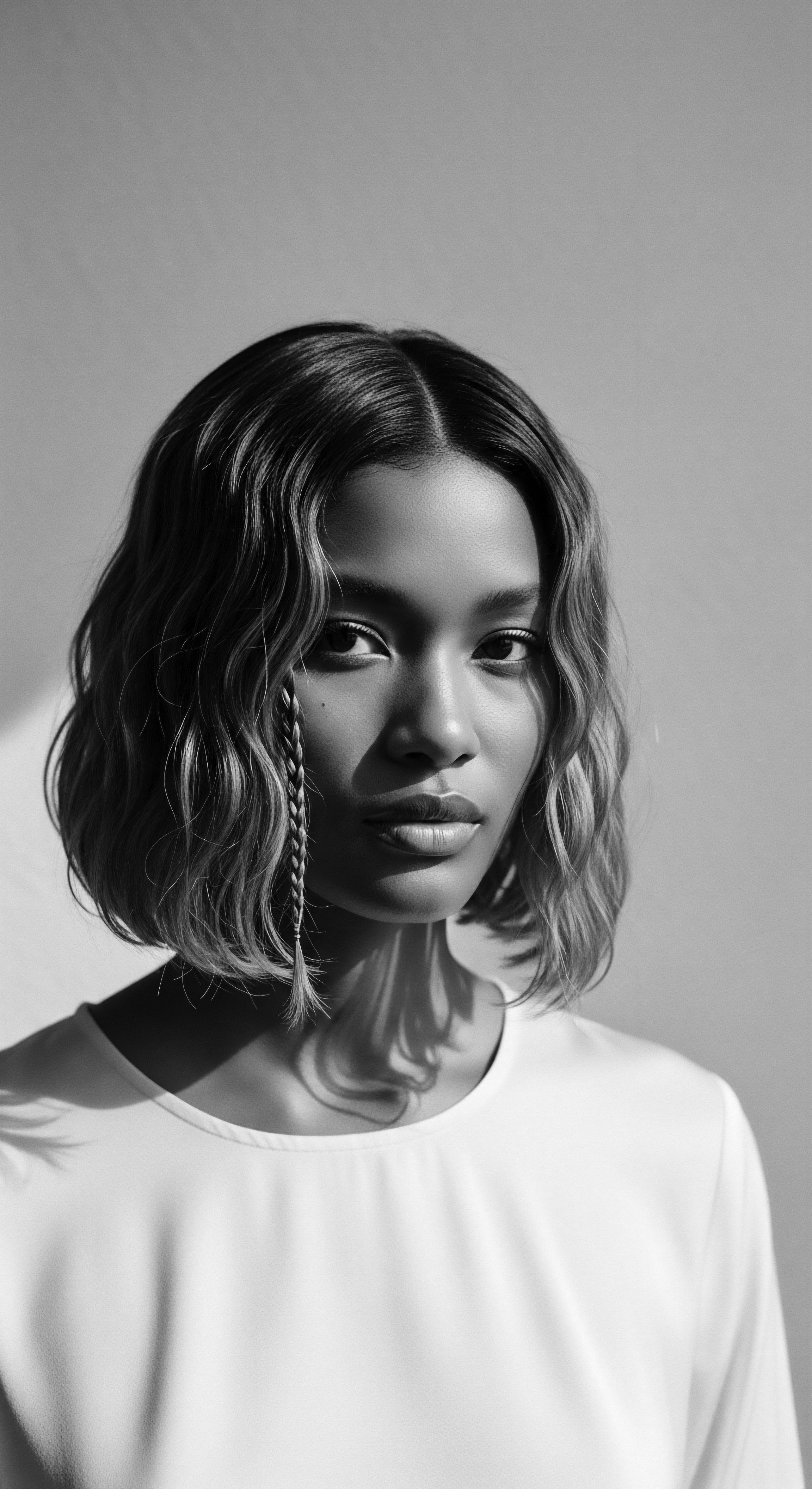
Early Rituals of Adornment and Care
Traditional African hair care practices were deeply integrated with daily life and seasonal cycles. These were not merely about cleanliness but about ritual, connection, and social expression. The tools and ingredients employed were sourced directly from the natural environment, reflecting a symbiotic relationship with the earth.
- Combs and Picks ❉ Carved from wood or bone, these implements featured wider teeth, specifically designed to navigate the unique structure of textured hair without causing undue stress or breakage. Their design speaks to an ancient understanding of the hair’s delicate nature.
- Natural Oils ❉ Shea butter, palm oil, and various nut oils were regularly applied to moisturize, protect, and add luster. These emollients provided a protective barrier against environmental elements and helped to maintain the hair’s suppleness.
- Herbal Infusions and Clays ❉ Specific leaves, roots, and clays were steeped or mixed to create rinses and masks that cleansed, conditioned, and fortified the hair and scalp. These ancestral recipes often possessed antiseptic or anti-inflammatory properties, reflecting an early understanding of scalp health as foundational to hair growth.
These practices, rooted in observation and inherited wisdom, formed the bedrock of Textured Hair Heritage. They underscore a philosophy of care that honors the hair’s natural state, working in harmony with its intrinsic qualities rather than against them. The act of caring for hair was often a communal activity, particularly among women, serving as a powerful space for intergenerational teaching and the transmission of cultural values.
Textured Hair Heritage represents the profound ancestral connection, cultural expression, and enduring resilience embodied within the unique characteristics of naturally coiled, curled, and wavy hair.
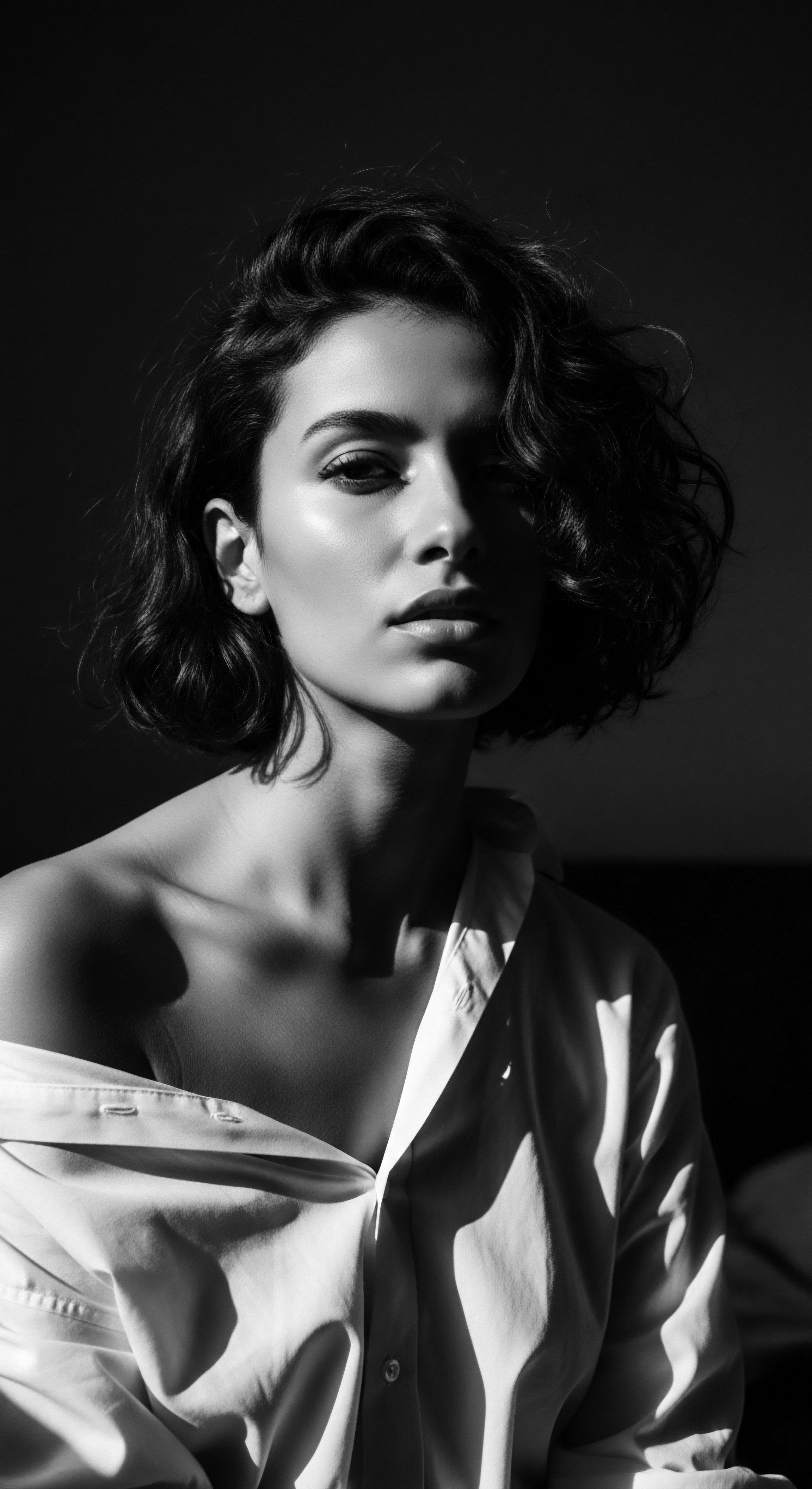
Intermediate
Moving beyond its fundamental origins, the Textured Hair Heritage expands into a living, evolving narrative, demonstrating how ancestral practices have persisted, adapted, and continue to shape the care and identity of Black and mixed-race hair across the globe. This deeper meaning of Textured Hair Heritage involves understanding its journey through trials and triumphs, highlighting its resilience as a cultural anchor and a personal declaration. The continuity of these practices, even when faced with immense disruption, speaks volumes about the deep value placed upon hair within these communities.
The significance of Textured Hair Heritage is not confined to ancient history; it lives within the inherited wisdom passed from elder to youth, in the communal gathering around a styling chair, and in the quiet moments of personal hair care. It is the continuation of a legacy that honors the inherent qualities of coils, curls, and waves, transforming what was once a marker of identity into a powerful statement of self-acceptance and pride. This understanding allows for a more nuanced appreciation of how hair care rituals are not just about aesthetics, but about preserving a connection to one’s roots.
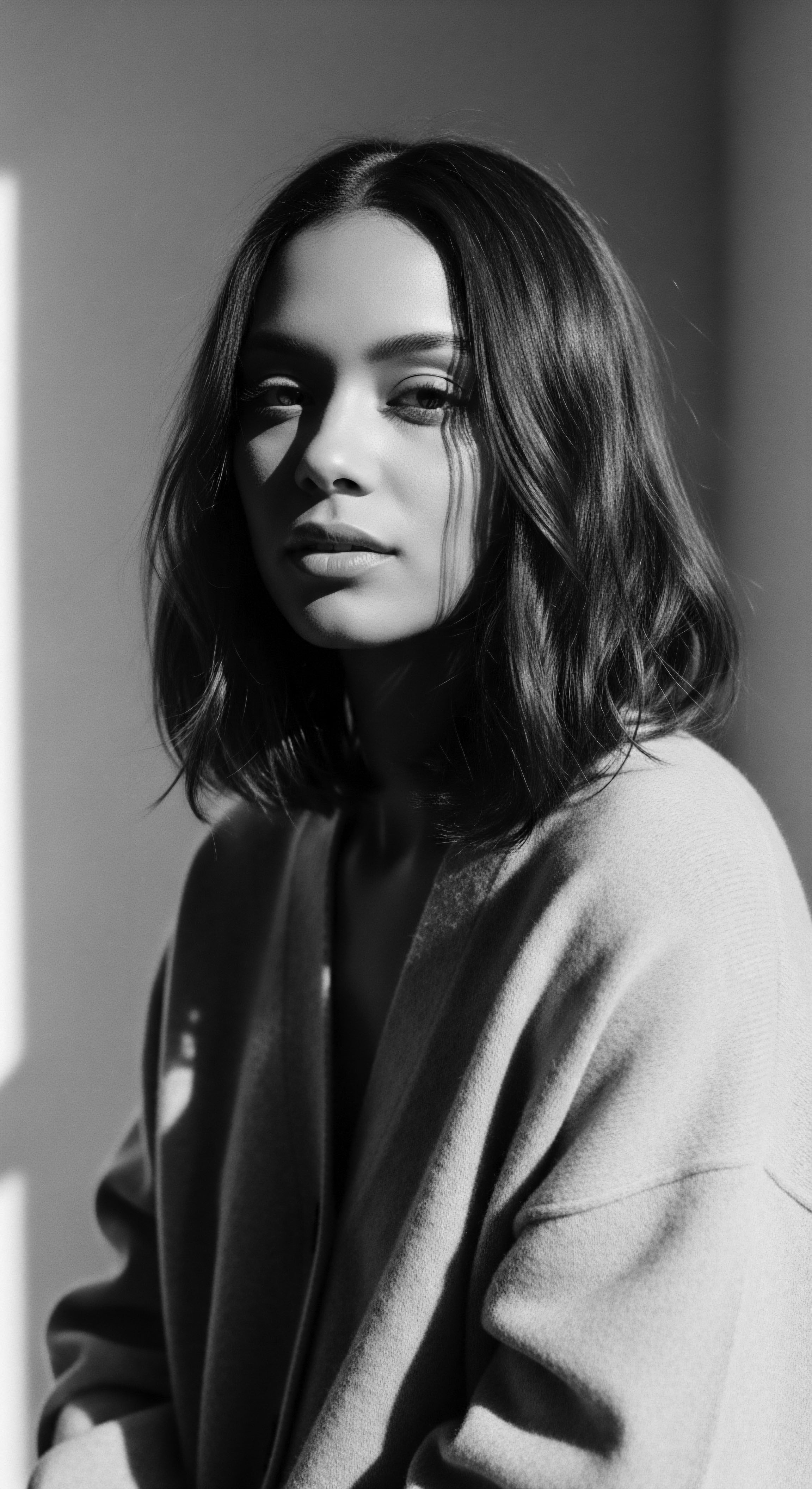
The Tender Thread ❉ Continuity Through Time
The forced migration of African peoples during the transatlantic slave trade presented an immense challenge to the continuity of Textured Hair Heritage. Stripped of their tools, traditional ingredients, and the communal spaces for hair care, enslaved Africans faced dehumanizing conditions that made maintaining their elaborate styles nearly impossible. The act of shaving heads upon arrival in the Americas was a deliberate, violent effort to sever ties to identity and heritage. Yet, against overwhelming odds, the knowledge and spirit of these practices persisted.
In the crucible of enslavement, ingenuity and resilience gave rise to new forms of hair care. Enslaved people used available resources, such as cornmeal and kerosene for cleansing, and bacon grease or butter for conditioning, adapting ancestral wisdom to harsh new realities. Head coverings, initially born of necessity to protect hair during labor or to conform to imposed norms, also became a subtle means of preserving identity and resisting complete cultural erasure. This period exemplifies the remarkable adaptability and enduring spirit of Textured Hair Heritage, proving its power to transcend physical hardship.
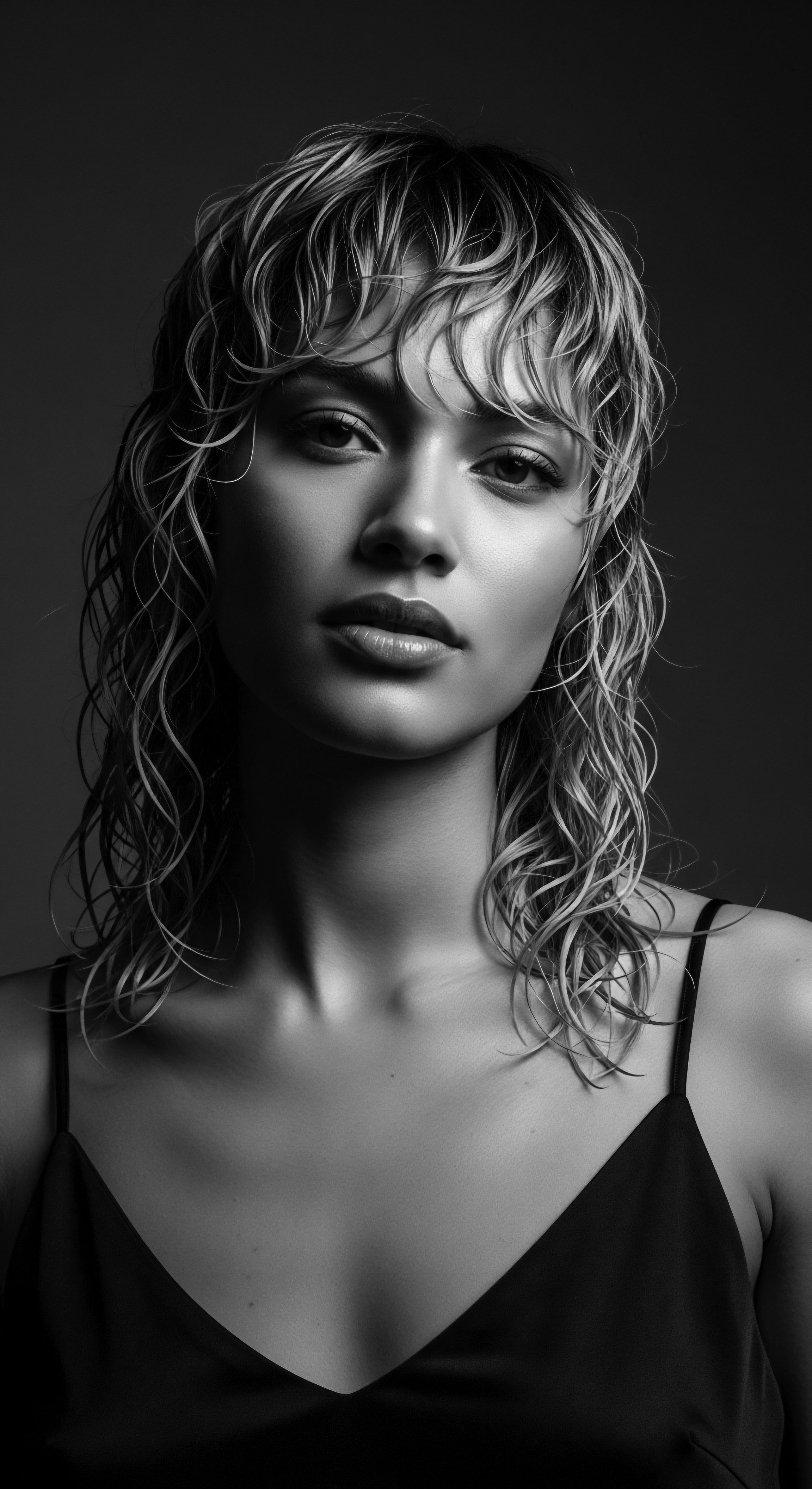
Hair as Resistance and Resilience
Beyond survival, hair became a potent symbol of resistance and cultural defiance. In some instances, cornrow patterns were ingeniously used to encode maps for escape routes, with seeds and grains braided into the hair to sustain those seeking freedom. This covert communication system speaks to the extraordinary lengths to which people went to preserve their autonomy and aid collective liberation.
Later, during the Civil Rights and Black Power movements of the 1960s and 1970s, the Afro hairstyle emerged as a powerful, overt statement. It was a bold rejection of Eurocentric beauty standards that had long devalued textured hair, and a proud affirmation of Black identity and unity. Figures like Angela Davis popularized the Afro as a political statement, demonstrating how hair could be a visible declaration of racial pride and a challenge to societal norms. This period marked a significant reclamation of Textured Hair Heritage, shifting it from a site of oppression to a source of collective strength and self-acceptance.
The enduring legacy of Textured Hair Heritage reveals itself in the continuity of care rituals, adapted and preserved through generations, even amidst profound historical challenges.

Community and Collective Memory
The communal aspect of hair care has been a cornerstone of Textured Hair Heritage. Historically, and continuing in many communities today, hair styling is a shared activity, often involving family members or trusted stylists. These gatherings serve as informal schools where techniques, traditions, and stories are passed down.
Conversations during these sessions often touch upon family history, community news, and ancestral wisdom, solidifying the link between hair care and collective memory. This intergenerational exchange ensures that the knowledge of how to care for and style textured hair remains a living tradition.
Such communal practices are not merely about aesthetics; they are vital acts of cultural preservation. They reinforce a sense of belonging and affirm shared identity, creating spaces where individuals feel seen, valued, and connected to a larger heritage. This collective nurturing of hair also extends to the shared understanding of its vulnerabilities and strengths, fostering a collective approach to maintaining its health and beauty.

Traditional Ingredients and Their Wisdom
The ancestral knowledge embedded within Textured Hair Heritage includes a sophisticated understanding of natural ingredients and their therapeutic properties. These botanicals, often sourced from the immediate environment, were used not only for their cosmetic benefits but also for their medicinal qualities, addressing scalp conditions and promoting hair vitality.
| Traditional Ingredient Shea Butter (Vitellaria paradoxa) |
| Ancestral Use in Hair Care Deep conditioning, scalp moisturizing, protection from sun. |
| Contemporary Parallel/Scientific Insight Rich in fatty acids and vitamins (A, E, F); occlusive properties reduce water loss from hair, offering natural UV protection. |
| Traditional Ingredient Palm Oil (Elaeis guineensis) |
| Ancestral Use in Hair Care Hair strengthening, shine, scalp treatment. |
| Contemporary Parallel/Scientific Insight Contains Vitamin E, tocotrienols, and carotenoids; acts as an emollient and antioxidant, conditioning the hair shaft. |
| Traditional Ingredient Aloe Vera (Aloe barbadensis miller) |
| Ancestral Use in Hair Care Soothing scalp irritation, moisturizing, mild cleansing. |
| Contemporary Parallel/Scientific Insight Enzymes break down dead skin cells on the scalp; polysaccharides offer hydrating and anti-inflammatory benefits. |
| Traditional Ingredient Chebe Powder (from Croton zambesicus) |
| Ancestral Use in Hair Care Hair strengthening, length retention, reducing breakage (Chad). |
| Contemporary Parallel/Scientific Insight A blend of natural powders (including cherry seeds, lavender croton, resin tree sap, clove, and stone scent); traditionally used to coat and protect hair strands, reducing friction and breakage. |
| Traditional Ingredient Henna (Lawsonia inermis) |
| Ancestral Use in Hair Care Hair coloring, conditioning, strengthening, scalp health. |
| Contemporary Parallel/Scientific Insight Contains lawsone, which binds to keratin, strengthening the hair shaft and providing a reddish tint; possesses antifungal and antibacterial properties for scalp health. |
| Traditional Ingredient These traditional ingredients underscore a profound ancestral connection to natural resources for holistic hair care, often finding validation in contemporary scientific understanding. |
The ongoing practice of utilizing these ancestral ingredients is a testament to the enduring wisdom embedded within Textured Hair Heritage. It highlights a preference for natural, time-tested remedies that prioritize the well-being of the hair and scalp, often bypassing harsh chemicals that can be detrimental to the unique structure of textured strands. This approach represents a conscious choice to honor and continue a legacy of care that has sustained communities for centuries.
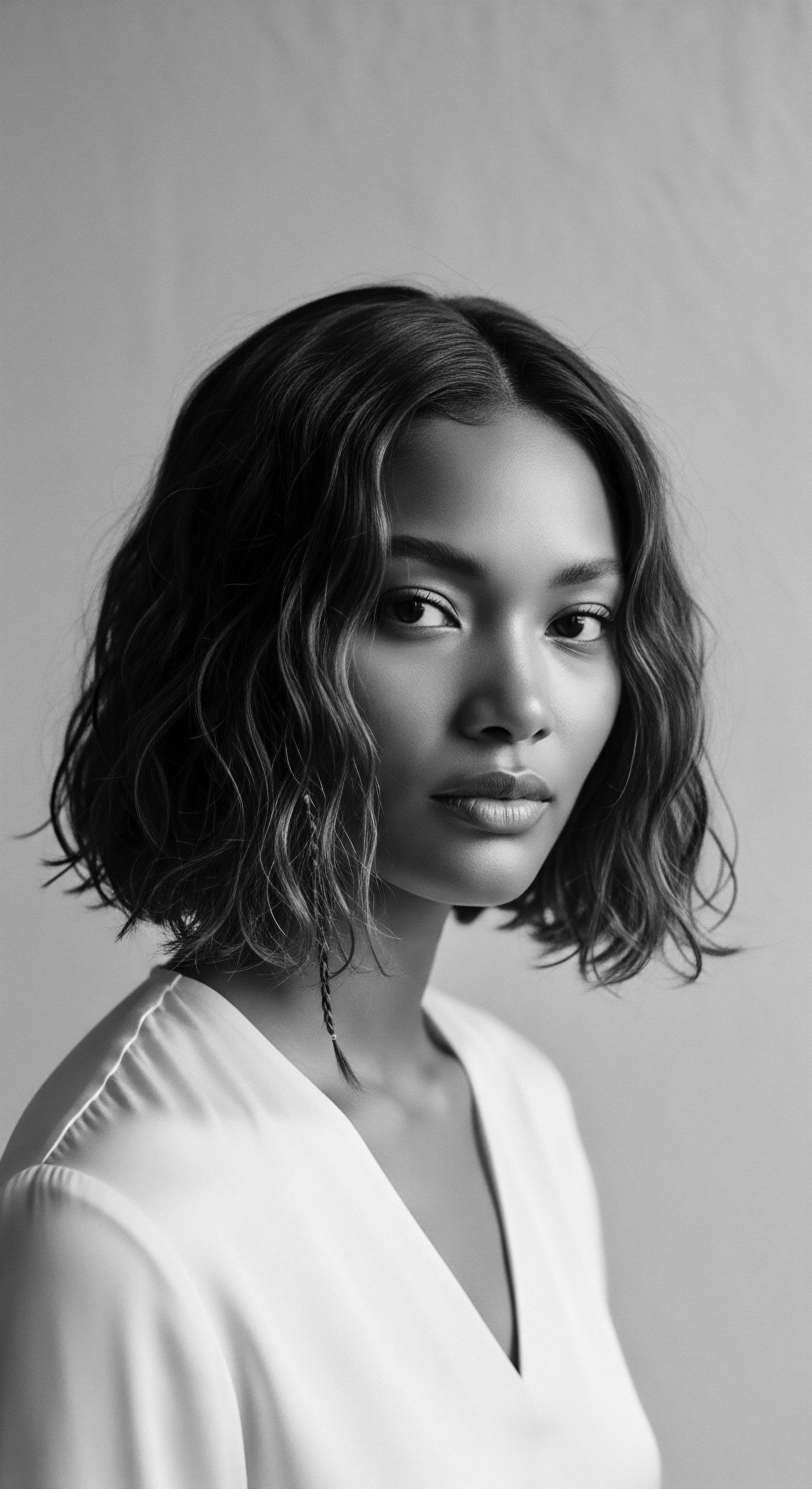
Academic
The Textured Hair Heritage, from an advanced scholarly perspective, constitutes a complex, living phenomenon that transcends simple biological classification, positioning itself as a central artifact in the study of identity, resistance, and cultural transmission within the African diaspora. Its meaning extends to a profound interpretation of hair as a dynamic system, where biological attributes, historical forces, psychological impacts, and social expressions intertwine to form a unique, evolving cultural language. This delineation requires an expert understanding of its historical trajectory, its scientific underpinnings, and its socio-political implications, providing a comprehensive explication of its ongoing significance.
The full significance of Textured Hair Heritage is found in its capacity to serve as a deeply personal and collectively shared cultural text. It is a statement of continuity, a symbol of resilience, and a testament to the adaptive genius of communities who have consistently reclaimed and redefined beauty on their own terms. This academic exploration reveals how hair is not merely a physical attribute, but a repository of ancestral memory, a medium for social commentary, and a vibrant canvas for self-determination.
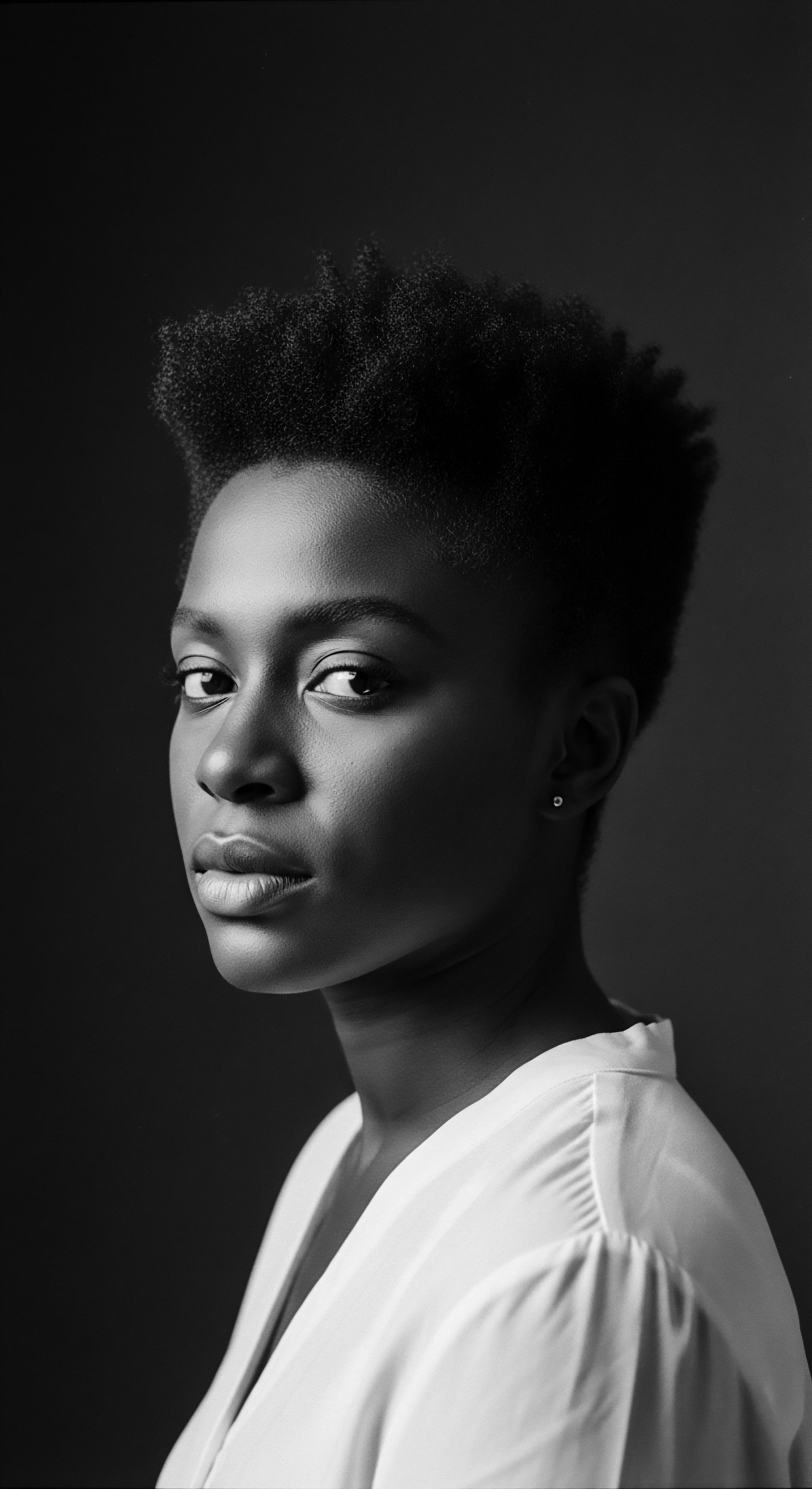
The Unbound Helix ❉ A Scholarly View
From an anthropological standpoint, Textured Hair Heritage can be analyzed as a semiotic system—a system of signs and symbols through which meaning is created and communicated. Hair, in this context, functions as a powerful non-verbal communicator, conveying messages about social status, ethnic affiliation, religious adherence, and individual identity. The intricate braiding patterns, the voluminous shape of an Afro, or the deliberate formation of locs are not random acts of styling; they are intentional cultural statements, deeply encoded with historical memory and contemporary meaning. This perspective allows us to grasp the immense cultural value that was lost when enslaved Africans had their heads shaved, an act that was a calculated assault on their very identity and communication systems.
Furthermore, the study of Textured Hair Heritage invites a decolonial lens, challenging Eurocentric beauty standards that historically pathologized and devalued naturally textured hair. The preference for straight hair, often enforced through social and economic pressures, created a hierarchy that positioned textured hair as “unprofessional” or “undesirable.” Understanding this historical context is essential for comprehending the ongoing movements to celebrate natural hair, which are not merely fashion trends, but acts of profound self-reclamation and cultural affirmation. These movements seek to dismantle internalized biases and to re-establish the inherent beauty and dignity of textured hair.

Hair as a Semiotic System ❉ Decoding Identity
The language of hair within the African diaspora is remarkably rich and complex. Different styles, adornments, and care practices have served as powerful expressions of individual and collective identity, adapting across geographical and temporal landscapes.
- Cornrows as Covert Maps ❉ During periods of enslavement, the seemingly simple act of braiding cornrows transformed into a sophisticated communication network. Patterns were designed to represent geographical features, escape routes, or even to hide seeds for cultivation in new lands, serving as a silent act of resistance and survival.
- The Afro as a Political Proclamation ❉ In the mid-20th century, the Afro became a visual manifestation of the Black Power movement, symbolizing a rejection of assimilation and a proud assertion of African heritage. It was a deliberate choice to wear one’s hair in its natural, unbound state, a direct challenge to oppressive beauty norms.
- Locs as a Spiritual and Cultural Connection ❉ The cultivation of locs (dreadlocks) often carries spiritual significance, representing a journey, a commitment to natural living, and a connection to ancestral traditions, particularly within Rastafarian culture and other spiritual practices. They are a testament to patience, growth, and enduring heritage.
These examples underscore how hair styles are not static, but dynamic cultural artifacts, constantly re-interpreted and re-contextualized by new generations, yet always rooted in the historical memory of the collective. The choices individuals make about their hair today are often deeply informed by these historical dialogues, even if unconsciously.

The Socio-Economic Dimensions of Hair Heritage
The Textured Hair Heritage has also shaped a distinct socio-economic landscape, giving rise to an industry specifically catering to the unique needs of textured hair. This sector, often pioneered by Black entrepreneurs, has historically served as a vital source of economic independence and community building. Madam C.J.
Walker, for example, built an empire in the early 20th century by developing hair care products specifically for African American women, becoming one of the first self-made female millionaires in the United States. Her success was not just a personal triumph; it created career opportunities for thousands of Black women who became agents, selling products door-to-door and operating beauty schools, thereby providing avenues for financial autonomy in a segregated society.
Today, the global Black hair care market continues to expand, reflecting the sustained demand for specialized products and services. Estimates suggest this market is a significant segment of the broader beauty industry. In the United States, Black consumers annually spend a considerable amount on hair care products, representing a notable share of the total beauty industry market. Moreover, Black consumers represent over 70% of hair extension sales, and Black women often spend more on hair care than other ethnic groups.
This economic activity is a direct consequence of the historical and cultural necessity to address the specific care requirements of textured hair, often unmet by mainstream offerings designed for different hair types. The growth of this market is a testament to the enduring cultural and economic agency within Black communities, who have consistently created solutions tailored to their own needs, often transforming perceived limitations into opportunities for collective prosperity.
Textured Hair Heritage serves as a dynamic semiotic system, articulating identity, resistance, and cultural continuity across generations and geographies.
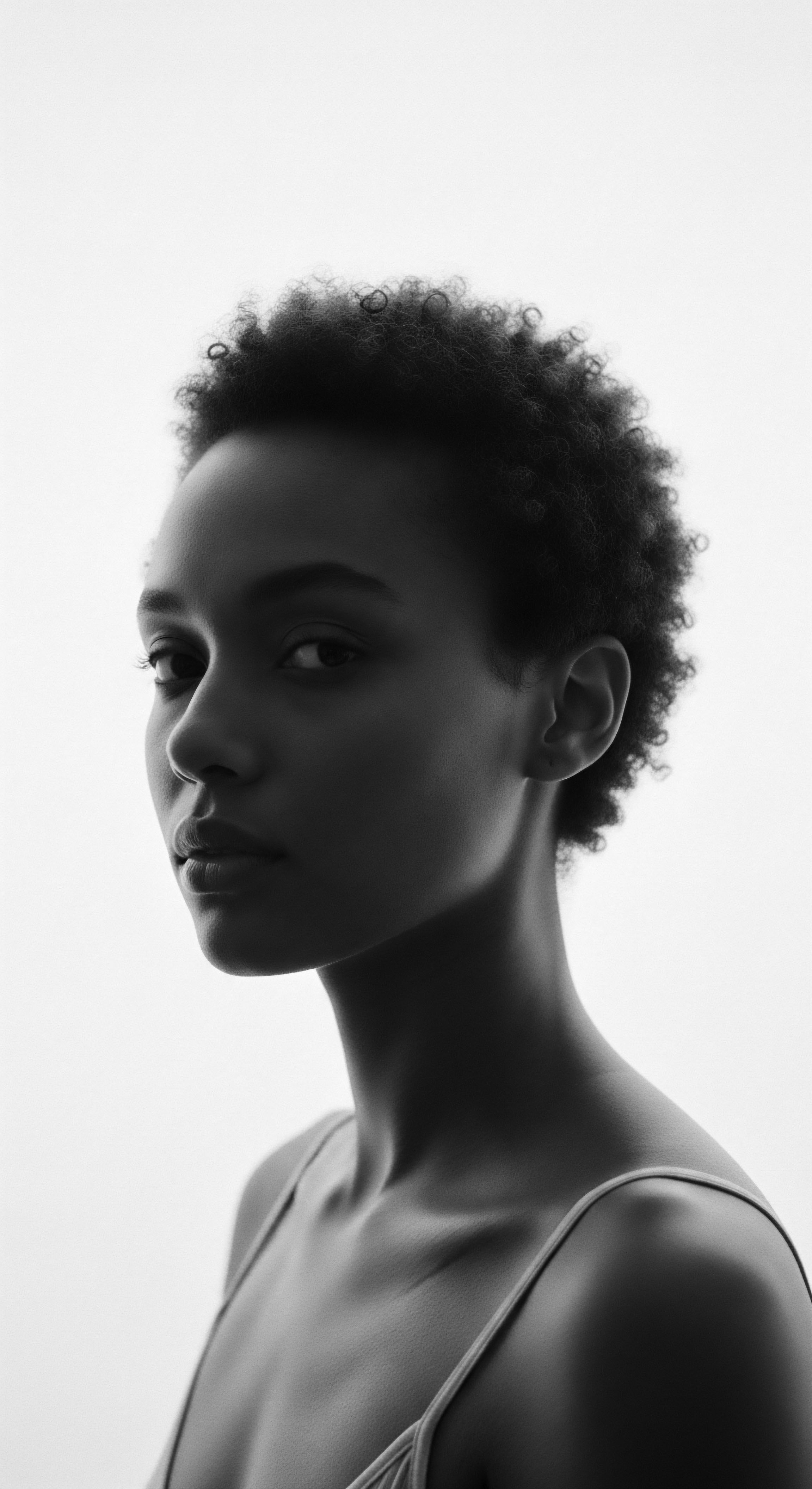
Scientific Validation of Ancestral Practices
Modern trichology and dermatological research are increasingly affirming the wisdom embedded in ancestral hair care practices. The unique structural characteristics of textured hair, such as its elliptical cross-section and higher lipid content, necessitate specific care approaches that traditional methods intuitively provided. For instance, the emphasis on moisturizing oils and protective styles in ancestral practices aligns with contemporary scientific understanding of textured hair’s propensity for dryness and mechanical fragility.
Recent studies highlight how traditional plant-based ingredients, long used in African hair care, possess properties that support scalp health and hair vitality. Ethnobotanical surveys identify numerous species used for hair conditions, many of which also have records for treating metabolic issues, suggesting a connection between topical application and localized nutritional benefits for the scalp. This convergence of ancient wisdom and modern science reinforces the profound efficacy of heritage-based hair care, moving beyond anecdotal evidence to offer validated approaches.
The challenges faced by textured hair in modern research, such as difficulties with traditional EEG protocols or hair cortisol collection due to hair texture and styling, underscore the historical bias in scientific inquiry. Addressing these methodological limitations is crucial for developing a more inclusive and comprehensive understanding of textured hair biology and care. The pursuit of scientific understanding should, therefore, proceed hand-in-hand with a deep respect for the ancestral knowledge that has sustained textured hair for millennia.

Future Trajectories ❉ Preserving and Innovating
The future of Textured Hair Heritage lies in a continuous dialogue between preservation and innovation. This involves safeguarding traditional knowledge systems while embracing scientific advancements to further enhance care and understanding. The aim is to create a future where the full spectrum of textured hair is celebrated, supported by products and practices that honor its biological and cultural specificity.
The ongoing Natural Hair Movement, propelled by digital platforms, serves as a powerful contemporary expression of this heritage. It has democratized access to information and fostered global communities dedicated to natural hair care, sharing techniques, product recommendations, and personal journeys. This digital resurgence has also fueled demand for products free from harsh chemicals, promoting healthier approaches aligned with ancestral principles.
The integration of ancestral wisdom with scientific research promises new avenues for product development and personalized care. By studying the efficacy of traditional botanicals and understanding the genetic variations that influence textured hair, researchers can formulate solutions that are truly tailored and effective. This collaboration ensures that the rich heritage of textured hair continues to evolve, remaining a source of pride, health, and identity for generations to come. The emphasis must remain on creating a landscape where textured hair is not only accepted but deeply revered for its unique qualities and the stories it carries.

Reflection on the Heritage of Textured Hair Heritage
As we contemplate the Textured Hair Heritage, we perceive it not as a static relic of the past, but as a vibrant, living entity, continually unfolding within the present moment and shaping futures yet to come. It is a profound testament to the enduring spirit of communities, particularly those of Black and mixed-race lineage, who have navigated centuries of change, challenge, and triumph with their crowns held high. The very fibers of textured hair carry the echoes of ancient drumbeats, the whispers of ancestral wisdom, and the resilient cadence of survival and celebration. This heritage is a constant reminder that true beauty resides in authenticity, in the stories etched into every coil and curl, and in the unbroken connection to one’s origins.
The Soul of a Strand ethos finds its deepest resonance within this heritage, recognizing each hair strand as a repository of history, a vessel of identity, and a beacon of collective memory. It is a call to honor the legacy of care, resistance, and self-expression that textured hair represents. By embracing this heritage, we do more than simply care for hair; we tend to a living archive of human experience, affirming the inherent dignity and profound cultural richness that has always defined textured hair across the globe. It is a legacy that teaches us about resilience, adaptability, and the unwavering power of self-acceptance, a gift passed down through the ages, awaiting our respectful continuation.
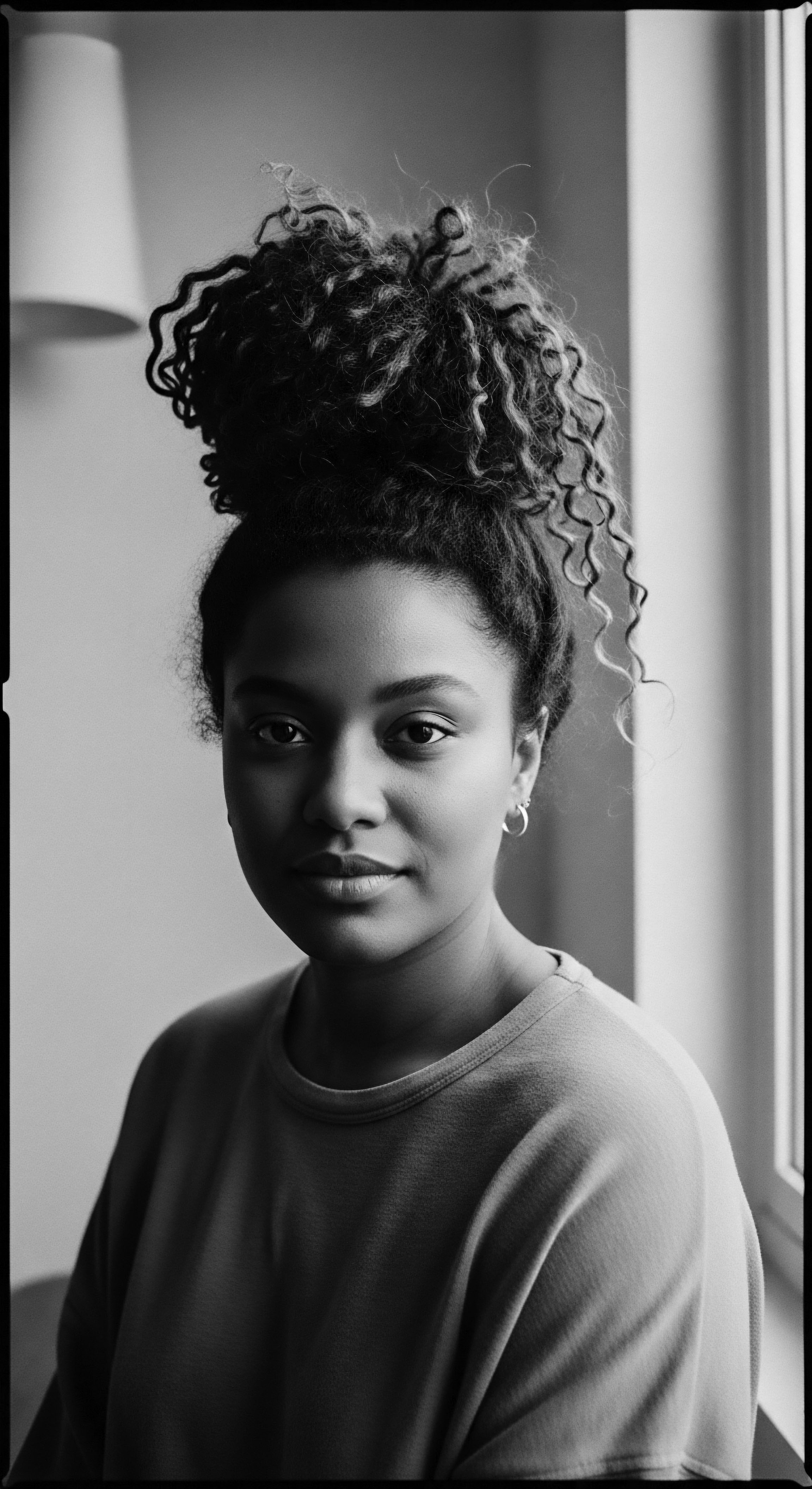
References
- Byrd, A. D. & Tharps, L. L. (2001). Hair Story ❉ Untangling the Roots of Black Hair in America. St. Martin’s Press.
- Jacobs-Huey, L. (2006). From the Kitchen to the Salon ❉ Language and Cultural Co-construction in the Black Hair Care Industry. University of California Press.
- Banks, I. (2000). Hair Matters ❉ Beauty, Power, and Black Women’s Consciousness. New York University Press.
- Mercer, K. (1994). Welcome to the Jungle ❉ New Positions in Black Cultural Studies. Routledge.
- Rooks, N. M. (1996). Hair Raising ❉ Beauty, Culture, and African American Women. Rutgers University Press.
- Patton, T. O. (2006). African American Women and Hair ❉ Is it Just Hair? Carolina Academic Press.
- Dabiri, E. (2019). Twisted ❉ The Tangled History of Black Hair Culture. Harper Perennial.
- Oforiwa, A. (2023). The History and Culture of African Natural Hair ❉ From Ancient Times to Modern Trends. AMAKA Studio.
- Oladele, D. Markiewicz, E. & Idowu, O. C. (2024). The Genomic Variation in Textured Hair ❉ Implications in Developing a Holistic Hair Care Routine. Preprints.org.
- Mbilishaka, A. Johnson, T. & Johnson, S. (2020). Black Hair and Mental Health ❉ A Literature Review. Journal of Black Psychology.
- O’Neil, M. Roberts, B. & Sparkes, A. (2015). Advances in Biographical Methods ❉ Creative Applications. Routledge.
- Sofowora, A. (1993). Medicinal Plants and Traditional Medicine in Africa. Spectrum Books Limited.
- Thompson, C. (2008). Black Women and Identity ❉ What’s Hair Got to Do With It? University of Michigan.
- DeLauder, S. F. (2003). Hair Is the Matrix. Transforming Anthropology.
- Caldwell, K. L. (2003). ‘Look at Her Hair’ ❉ The Body Politics of Black Womanhood in Brazil. Transforming Anthropology.
